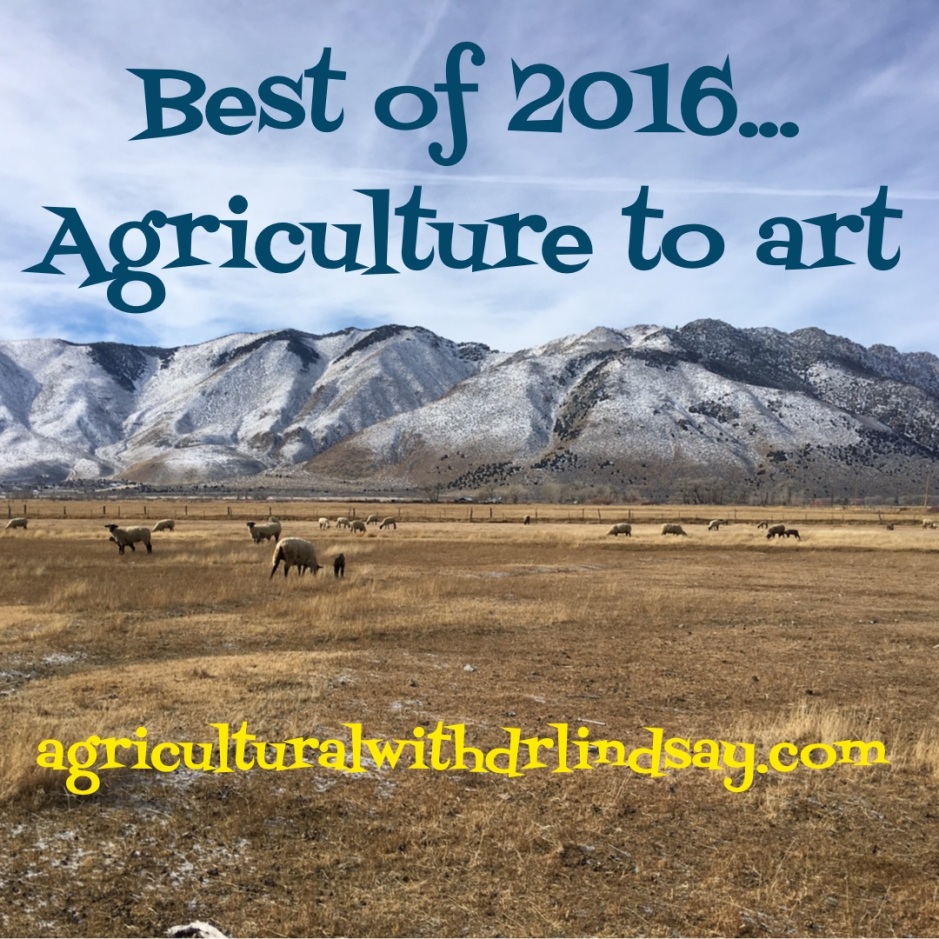Recently, several of my colleagues and I hosted a Sensitive Issues: Media and Communication Training, we worked on developing and improving our communication skills around agriculture and agricultural topics. One of the topics we received more information on was sustainability.
Dr. Jude Capper, a livestock sustainability consultant, was our first speaker. I want to share with some of the messages about sustainability shared by Dr. Capper.
 – Sustainability is defined as “able to last or continue for a long time.” Many livestock farmers and ranchers are sustainable – whether they raise 10 head or 1,000 head. If you have never heard of the Century Farms Program, you should check it out. The American Farm Bureau Foundation recognizes farms or ranches by state that have been in a family for 100+ years! That is sustainable.
– Sustainability is defined as “able to last or continue for a long time.” Many livestock farmers and ranchers are sustainable – whether they raise 10 head or 1,000 head. If you have never heard of the Century Farms Program, you should check it out. The American Farm Bureau Foundation recognizes farms or ranches by state that have been in a family for 100+ years! That is sustainable.
– There are essentially three things that need to be considered to be sustainable: 1) the economic viability, 2) the environmental response, and 3) the social acceptance. I think you would agree that no matter the type of agriculture system, these are all important to livestock farmers and ranchers.
– Every farmer and rancher can be sustainable! Sustainability is seen in all types of agriculture — conventional, organic, grass-fed, grain-fed, small, and large. Size of the agricultural enterprise is NOT a determinant of sustainability. Sustainability does not just apply to niche agricultural products.
– Animal agriculture’s U.S. carbon footprint is small! According tot he U.S. Environmental Protection Agency (EPA) meat production accounts for 2.1% of total greenhouse gas emissions.
– If everybody in the U.S. went meatless every Monday for an entire year… The National carbon footprint would only decrease by less than 1/3 of 1 percent!
– If animal agriculture did not exist, what would be the carbon cost of sourcing product ingredients that currently come from agricultural byproducts? Think about all of the products we use daily (i.e. cosmetics, gelatin based foods, paints, etc.), medications, and even food for our pets. Animal agriculture helps keep the carbon footprint low!
– Meat and dairy can be replaced with vegetable proteins, but humans produce methane too!
– In 1977, it took five animals to produce the same amount of beef as four animals in 2007. Raising beef has become more efficient.
– In 1977 it took 609 days to get them to a harvest (slaughter) weight, in 2007 it took 485 days. This equates to 3,045 animal days in 1977 and 1,940 animal days in 2007. Raising beef has become more sustainable, and is reducing resources.
– If we converted our current cattle feeding system entirely to a grass-fed system:
– We would need 64.6 million more cattle for a grass-fed system. These cattle average a 615 pound hot carcass weight (the weight after the animal has been harvested, hide, hooves, and intestines/variety meats removed), and it would take approximately 679 days to get them to a desirable harvest (slaughter) weight.
– In comparison, a conventional (or grain-fed beef animal) has an approximate 800 pound hot carcass weight and takes approximately 444 days to get to desirable harvest weight.
*** All cattle farming/ranching systems are needed and valued, whether it is grain-fed, grass-fed, organic, or natural — one is not better than another, they are just different.
– If, the entire beef industry converted entirely to grass-fed beef we would need an additional 131 million acres of land, 468 billion gallons of water, and 131 million tones of carbon!
– Hormones in food are considered unacceptable, but lifestyle hormones are acceptable.
– One 8 ounce steak from a non-implanted beef animal contains 3.5 ng of estrogen, from an implanted beef animal (a beef animal given additional hormones) it is 5.1 ng of estrogen. One birth control pill delivers 35,000 ng of estrogen. In comparison, a woman would have to eat 3,000 pounds of beef daily to get the same amount of hormones through meat that is found in birth control!
– Growth enhancing technologies (i.e. growth hormones) reduce the environmental impact of beef by 10.7%! More specifically, 4.2 tonnes of feed, 1 acre of land, and 22,722 gallons of water per 800 pound carcass and reduced if growth enhancement technologies are used.
– The extra beef produced as a result of using beta-agonists and implants on a single carcass with supply seven children with school lunches for an entire year!
All foods and food systems can be sustainable. Sustainability is best achieved by optimizing efficiency across the entire food and agriculture chain. Technology has allowed beef farmers/ranchers to produce more beef using less resources.
What other questions do you have about sustainability? I have also written about it here.

————————————-
Dr. Lindsay can also be found on:
– Website (http://food.unl.edu/ag-and-food)
– Twitter/Instagram (agwithdrlindsay)
– Facebook (https://www.facebook.com/agwithdrlindsay)
– Pinterest (Lindsay Chichester-Medahunsi)
















